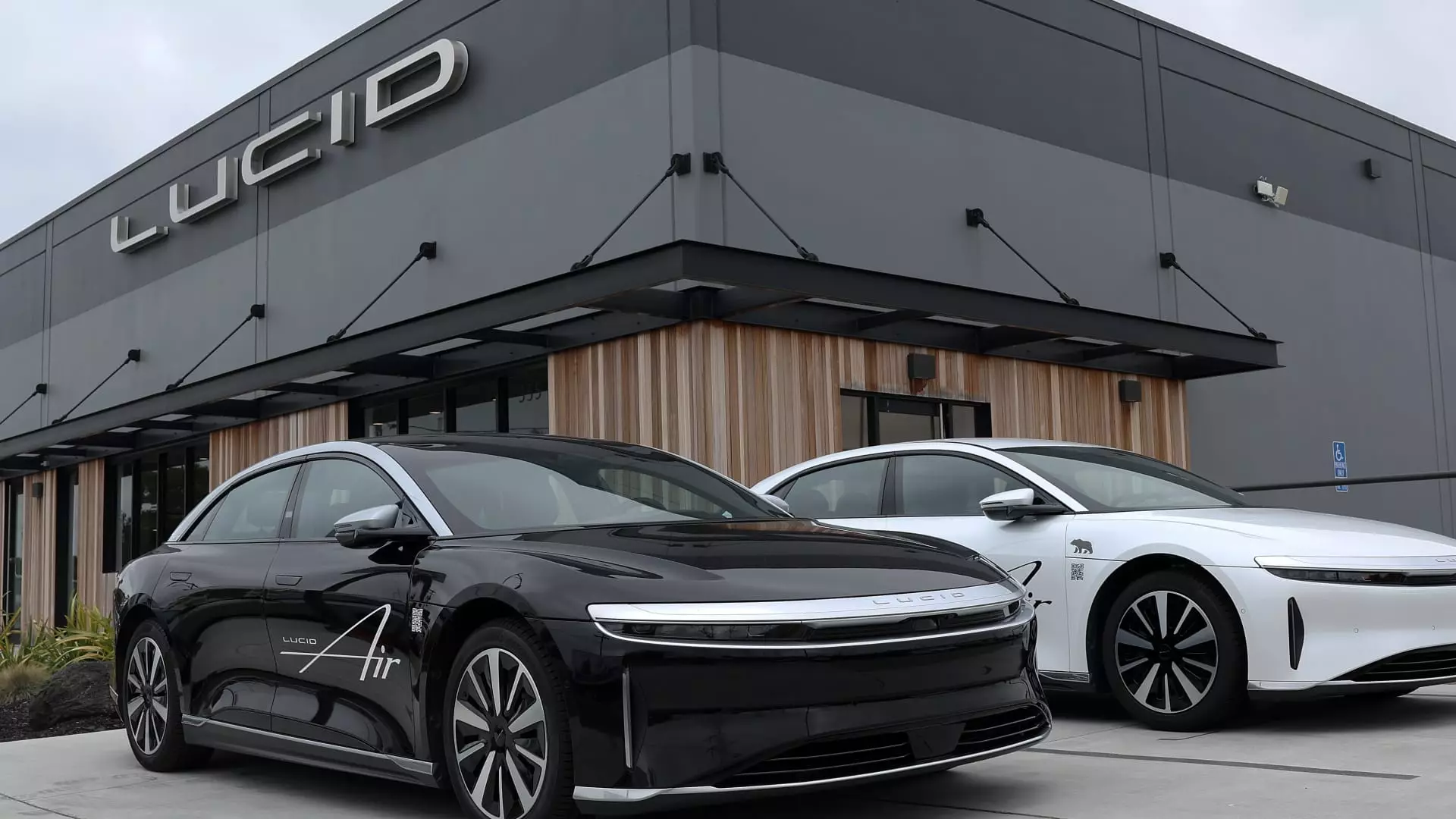The electric vehicle market is increasingly competitive, and companies like Lucid Group are feeling the pressure to perform. In the recent third quarter, Lucid slightly surpassed Wall Street’s expectations, easing fears about its trajectory amid significant loss figures. However, while Lucid’s performance metrics may appear promising on the surface, a closer examination reveals some underlying challenges that could affect its future.
Financial Overview: A Mixed Bag of Results
Lucid Group reported a smaller-than-anticipated adjusted loss per share of 28 cents, beating the analysts’ estimate of a 30-cent loss. With revenue totaling approximately $200 million, the company also managed to outpace expectations of $198 million. These metrics led to a rise in Lucid’s shares by over 8% during after-hours trading, indicating that investor sentiment briefly improved.
Nonetheless, it is impossible to overlook the significant widening loss of $992.5 million in this quarter, compared to a loss of $630.9 million a year earlier. This stark increase contradicts the more positive light cast by revenue figures and per-share losses. While the stock price may have rebounded momentarily, the long-term health of the company raises a myriad of questions regarding its sustainability.
Lucid CEO Peter Rawlinson referred to the third quarter as a “landmark” period for the company, touting record deliveries of 2,781 units. Although this figure is noteworthy, it comes against a backdrop of lengthy waiting lists and an industry-wide struggle for supply. While Meeting production and financial targets can be heralded as achievements, the reality of manufacturing and delivering vehicles amid economic volatility complicates the narrative.
Despite the uptick in deliveries, Lucid’s R&D expenses surged to $324.4 million—a noteworthy 40.1% increase compared to the previous year. When combined with the rising selling, general, and administrative costs ($233.6 million, up 23.1%), this pattern suggests a company in desperate need of rigorous fiscal discipline. If these upward trends in costs continue, they may ultimately hinder the company’s ability to sustain profitability.
Lucid ended the quarter with $5.16 billion in total liquidity, which is a critical figure when evaluating the company’s financial cushion against its substantial losses. However, it is crucial to note the impact of its recent $1.75 billion public offering, which caught investors off-guard and contributed to a decline of around 45% in stock value for the year. This shift demonstrated a loss of investor confidence that could be hard to recoup.
In terms of growth, Lucid plans to produce approximately 9,000 vehicles in 2024, representing a modest 6.8% increase from the prior year. While this ambition could be celebrated as a positive outlook, it raises questions about market demand amid intensifying competition, especially from established players like Tesla and emerging challengers such as Rivian.
Strategic Moves in a Challenging Environment
Lucid is navigating a capital-intensive growth phase, expanding its factory in Arizona and developing a second manufacturing site in Saudi Arabia. In this context, the company is gearing up for the anticipated launch of its Gravity SUV, expected to hit the market at the end of this calendar year. However, significant capital expenditures are projected to reach $1.3 billion, down from earlier estimates but still formidable in the current economic climate.
The interim CFO, Gagan Dhingra, highlighted that cost-cutting measures were being implemented across various departments in the organization. While such measures are vital, frequent statements about tightening budgets may indicate that the company is more reactive than proactive in its strategizing—a potential red flag for stakeholders.
While Lucid Group’s third-quarter performance might superficially suggest a successful stride, multiple layers of concern lurk beneath the positive news. The increasing losses, rising operational costs, and the potential pitfalls of future production targets raise critical questions about the company’s path forward. As electric vehicle manufacturers vie for consumer attention and market share, Lucid must stabilize its financial framework and solidify its business model to maintain relevancy.
In the dynamic landscape of electric vehicles, where innovation is constant and consumer expectations are ever-evolving, Lucid’s future remains uncertain. Its current efforts may yield positive outcomes, but vigilance and adaptability will be key as the company navigates through a challenging marketplace.

